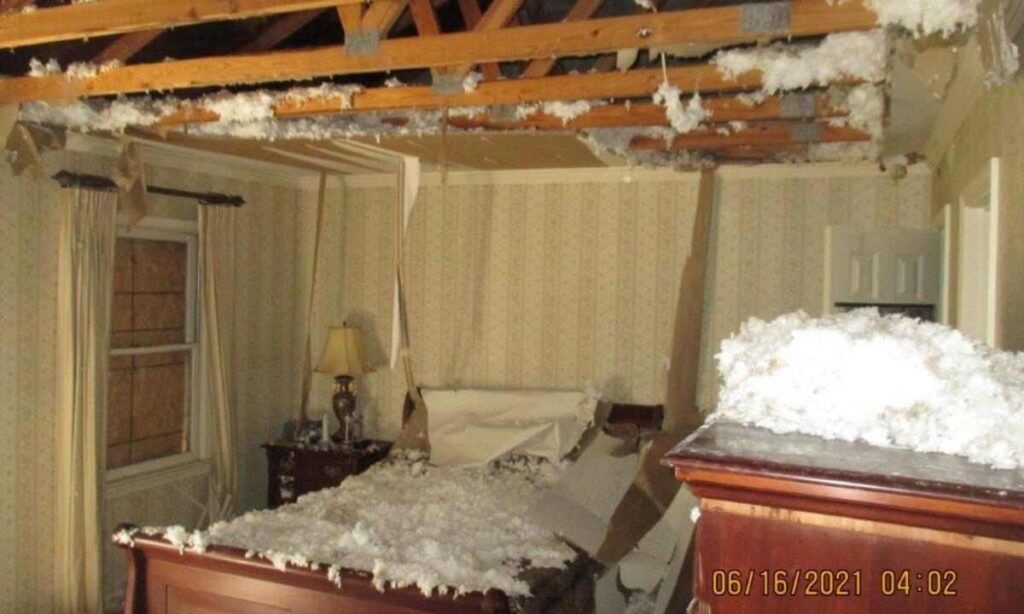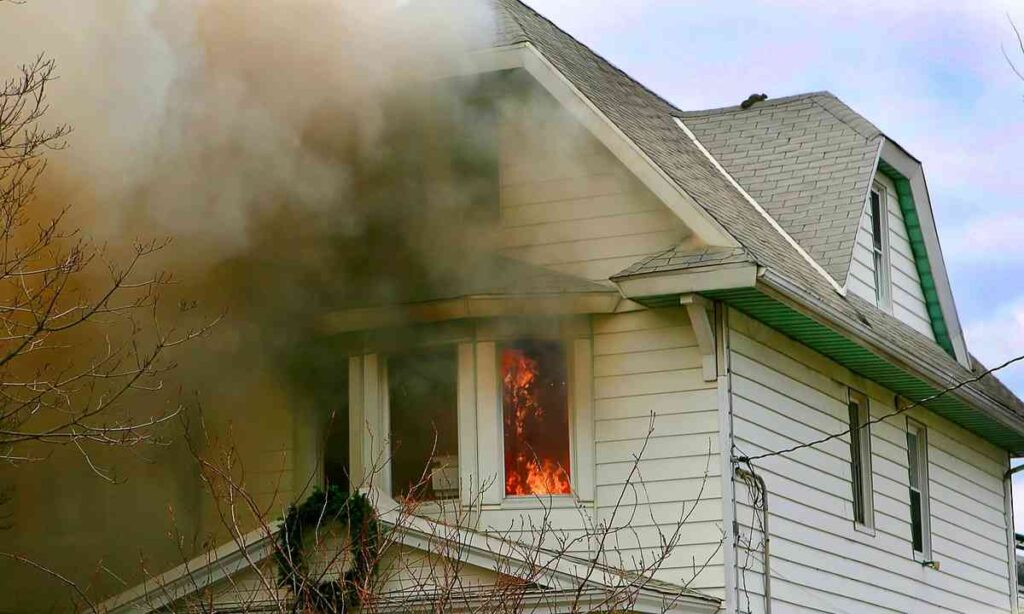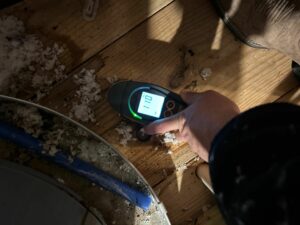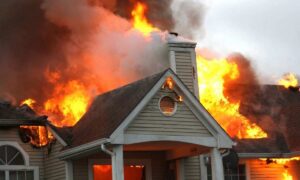Blogs
Mold Prevention Strategies After Fire Damage Restoration

In the aftermath of a fire, the process of restoration can be both challenging and exhaustive. Once the flames are extinguished, and the damage is assessed, another silent threat emerges – mold. Mold growth can begin within 24 to 48 hours of water exposure, making it a formidable adversary in the wake of fire damage restoration efforts. As a homeowner, understanding the potential risks and implementing effective mold prevention strategies is crucial for the long-term well-being of your property and the health of its occupants. In this comprehensive guide, Intensa Dry will help you plunge into the intricacies of mold prevention after fire damage restoration, offering insights and practical tips to ensure your home remains a safe and healthy haven.
The Link Between Fire Damage and Mold Growth
Before delving into prevention strategies, it’s essential to understand the connection between fire damage and mold growth. When firefighters extinguish a blaze, water is a primary tool in their arsenal. This water, necessary for putting out the fire, can saturate walls, floors, and belongings. This creates an ideal environment for mold spores to germinate and thrive. Additionally, the residual moisture from the fire-fighting efforts, coupled with the damp conditions caused by the fire itself, can create the perfect storm for mold infestation.

Assessing the Extent of Water Damage
The first step in effective mold prevention is a thorough assessment of water damage. Water damage restoration professionals use specialized equipment to detect hidden pockets of moisture, ensuring that no damp areas are overlooked. Even seemingly dry surfaces can harbor moisture beneath the surface, providing an unseen breeding ground for mold. By identifying and addressing all sources of water damage, homeowners can significantly reduce the risk of mold growth.
Swift and Efficient Drying Techniques
Time is of the essence when it comes to preventing mold growth after a fire. Swift and efficient drying of the affected areas is paramount. Restoration experts employ industrial-grade dehumidifiers, air movers, and drying equipment to expedite the drying process. This not only prevents mold but also mitigates further structural damage to the property. Homeowners should work closely with restoration professionals to ensure that all affected areas are thoroughly dried, leaving no room for mold to take hold.
Proper Ventilation and Air Circulation
Adequate ventilation is a key component of mold prevention. Proper airflow helps to remove excess moisture and prevent stagnation, reducing the likelihood of mold growth. Restoration professionals may recommend the use of fans, open windows, and other ventilation methods to ensure that damp air is expelled, and fresh air circulates throughout the space. Implementing these strategies can significantly contribute to creating an inhospitable environment for mold.
Monitoring Humidity Levels
Maintaining optimal indoor humidity levels is a critical aspect of mold prevention. Mold thrives in environments with high humidity, typically above 60%. Homeowners can use hygrometers to monitor humidity levels and take corrective action if necessary. Dehumidifiers can be strategically placed in areas prone to moisture buildup, such as basements and attics, to keep humidity levels in check. By proactively managing humidity, homeowners can create an environment that is unfriendly to mold growth.
Thorough Cleaning and Disinfection
Fire damage often leaves behind soot, ash, and other residues that can contribute to mold growth. Thorough cleaning and disinfection are essential to remove these contaminants and create an environment inhospitable to mold spores. Restoration professionals use specialized cleaning agents and techniques to ensure that all surfaces are effectively sanitized. Homeowners should also be vigilant in cleaning and disinfecting personal belongings that may have been exposed to smoke and soot during the fire.
Inspecting and Repairing Water-Damaged Materials
Materials such as drywall, insulation, and carpeting that have sustained water damage must be carefully inspected and, if necessary, replaced. Mold can easily colonize porous materials, making it imperative to address and remediate any compromised components. Restoration professionals can identify and replace water-damaged materials, ensuring that no hidden pockets of moisture remain to foster mold growth.
Sealing and Waterproofing
Preventing moisture intrusion is a fundamental aspect of mold prevention. Sealing and waterproofing vulnerable areas of the home, such as basements and foundations, can fortify the structure against water infiltration. This proactive measure not only protects against potential mold growth but also enhances the overall resilience of the property. Restoration professionals can provide expert advice on the most effective sealing and waterproofing methods for your specific situation.

Regular Inspections and Maintenance
Mold prevention is an ongoing process that requires regular inspections and maintenance. Homeowners should stay vigilant for signs of water damage, such as leaks, dampness, or discoloration. Conducting routine checks of vulnerable areas, such as the attic, basement, and crawl spaces, can help identify and address potential issues before they escalate. By staying proactive, homeowners can nip potential mold problems in the bud and ensure the long-term health of their homes.
Conclusion:
In the aftermath of a fire, the battle is not over once the flames are extinguished. The risk of mold growth poses a persistent threat to the structural integrity of your home and the health of its occupants. By understanding the interplay between fire damage and mold, and implementing the strategies outlined in this guide, homeowners can fortify their properties against the silent menace of mold. Swift and decisive action, coupled with the expertise of restoration professionals, can turn the tide in the favor of a mold-free and healthy living environment. As you embark on the journey of fire damage restoration, remember that mold prevention is not just a precaution; it’s a commitment to the well-being and longevity of your home.
FAQ’s
What precautions should be taken during mold remediation?
During mold remediation, wear protective gear like masks and gloves, isolate the affected area, and ensure proper ventilation to minimize exposure. Hire certified professionals for safe and thorough mold removal.
What is the process of Mould remediation?
Mold remediation typically involves assessment, containment, removal, cleaning, and prevention. Professionals assess the extent of mold, isolate the area, remove contaminated materials, clean surfaces, and implement preventive measures to inhibit future growth. The process ensures thorough and safe elimination of mold from the affected environment.
Which should be the first step in a mold remediation project?
The first step in a mold remediation project is a thorough assessment to determine the extent of mold contamination. This includes identifying affected areas, evaluating the type of mold present, and assessing potential risks. This initial step provides the foundation for developing an effective remediation plan.
What is the difference between mildew and mold?
Mildew is surface-level, powdery fungi appearing in white or gray, often on damp surfaces. Mold penetrates and can be black or green, thriving in areas with prolonged moisture exposure, causing more extensive damage.
What is the process of Mould inspection?
Mold inspection entails visual examinations, moisture assessments, and air sampling by professionals to identify mold sources, gauge moisture levels, and determine the type and extent of mold. This comprehensive process informs targeted remediation and prevention strategies.

